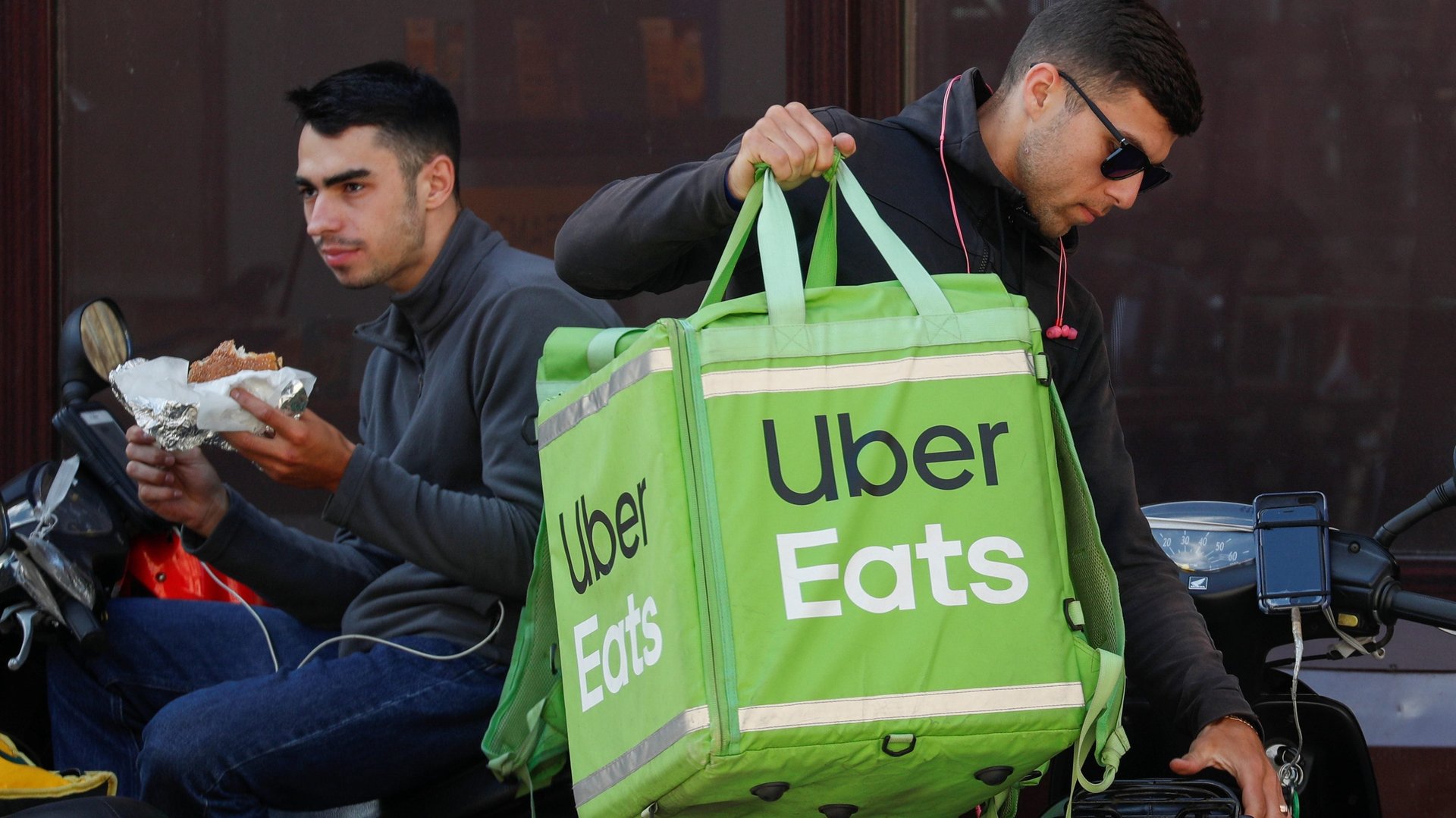Analysts expect Uber Eats to lose money on every order for at least the next five years
A report from investment firm Cowen may have left a sour taste for Uber Eats this week.


A report from investment firm Cowen may have left a sour taste for Uber Eats this week.
The report zeroed in on the unit economics, or per-order costs, of Uber’s food-delivery platform. Cowen’s analysts estimate that Uber is currently losing $3.36 on every order. They expect that loss to shrink to $0.46 per order by 2024, but didn’t say anything about when the food-delivery business might turn a profit.
“Driving better unit economics for Eats is a key issue among investors as it remains one of the primary growth engines for the company,” the analysts wrote.
Cowen’s analysts didn’t say how exactly Uber is losing all that money, but a good guess would be on regular and incentive pay for delivery workers. Uber paid out $253 million more to Eats drivers than it recognized from them in revenue in the second quarter. (It paid out another $5 million in referral bonuses.) That was more than double what Uber spent on driver incentives in the same quarter last year. Uber also spends money on discounts for Eats customers.
Uber didn’t respond to a request for comment on Cowen’s analysis.
Uber is looking to Eats to bolster its growth as momentum in the core ride-hailing business grinds to a halt. For the most recent quarter, ended June 30, Uber reported $2.3 billion in rides revenue on $12.2 billion worth of ride bookings. Those are big numbers, but the rides revenue figure was up just 2.5% up on the same period in 2018, while bookings grew at 20% year over year, the slowest rate for all the quarters that Uber has publicly broken out the data.
Eats is growing faster, in large part because the business is smaller and newer. For the second quarter, Eats revenue grew 72%, to $595 million, versus the same time last year, and order volume jumped 91%, to $3.4 billion.
Uber lost $5.2 billion in the second quarter, largely due to a hefty stock-based compensation bill triggered by its May IPO.
Food delivery is more complicated than ride-hailing because there are more parties involved in the transaction. In the typical ride, Uber collects a fare from the rider, pays out a portion of it to the driver, and pockets the rest. In the typical food-delivery transaction, Uber makes money by charging fees to the customer and taking a cut of the bill from the restaurant, and then pays the delivery person. That can make margins in food delivery particularly thin, because the money is split between more people.
In March, Uber restructured the fees it charges to Eats customers. It added a $2 fee to Eats orders worth less than $10 (a “small order fee”). It also split what had previously been an all-inclusive booking fee into a 15% service charge and a variable delivery fee. Such fees can add up quickly, particularly on small orders where $2 plus service and delivery can easily make the final order cost more than twice the price of the actual food. Cowen’s analysts believe these new fees help Uber improve the cut of revenue it takes from Eats orders, but estimate that it’s not nearly enough for the business to turn a profit any time soon.